Topics
Category
Era
Bicycling Craze, 1890s
In the 1890s, after bicycles became more comfortable and affordable, bicycling swept the nation, Minnesota included. Minnesotans who embraced bicycling at this time helped lay the groundwork for a number of lasting changes in American society, from shorter skirts to better roads.
Early versions of what we now call the bicycle were invented and used in Europe from the seventeenth century. However, the modern bicycle, first known as the "safety," was not created until the 1880s. The safety bicycle got its name because it was safer to ride than its immediate predecessor, a high-wheeled bicycle called the "ordinary." Ordinary bicycles were usually very heavy, since they were made of wood with solid rubber wheels. Their design, with one large front wheel and one small back one, caused them to be fairly unstable, and they sent many riders flying forward over the handlebars at even the slightest bump or hole in the road.
By contrast, the safety bicycle had two wheels of equal size, and it tended to be more stable and easier to brake. Its frame also was much lighter, as it was made of hollow steel tubing. Its wheels were lighter, too; they had pneumatic tires—hollow rubber tires with an inflated tube inside. These tires made for a much more comfortable ride, protecting the rider from the rough roads common at the time.
The new design of the bicycle made it increasingly popular. So did a drop in price. In the 1880s, the selling price of ordinary bicycles averaged $100 to $150, about six months' pay at the time. Safety bicycles started at a similar price, but their price dropped through the 1890s, until bicycle sellers in Minneapolis in 1898 could advertise basic models for sale at thirty dollars.
The popularity of bicycles led to changes in society. Men and women were more mobile because of bicycles; they could get out into the countryside or travel from one town to another more easily. Bicycles also provided exercise, and both casual riding and bicycle racing became common. Communities across the state, such as Moorhead and Fergus Falls, built tracks for bicyclists to race on, and the races were well attended during the mid-1890s.
Safety bicycles provided particular freedom to women. Before bicycles, women could go few places without a chaperone, but with bicycles, they could get around on their own, under their own power. In addition, bicycle clothing, with its more functional and relaxed design, caused a dress revolution for women, many of whom could leave their long skirts at home for the first time.
As their numbers grew, bicyclists became a political force. In Minnesota and elsewhere, one of their primary concerns was improving roads. Most roads in the state were dirt tracks, with ruts worn in them by horses and carts. City roads often were no better than rural ones. Bicyclists could only ride in the ruts, which caused conflicts with others using the road. Up on the sidewalks, bicyclists got in the way of pedestrians.
So bicyclists began campaigning for better roads for everyone and dedicated bicycle paths. They hoped these would lessen conflicts and enable more enjoyable riding. Bicyclists also made some of the first road maps, to guide riders along the best routes. The good roads movement and further development of road maps both were taken up by automobile enthusiasts in the twentieth century, but they started with bicyclists in the nineteenth century.
The automobile ended the mass popularity of the bicycle in Minnesota and the rest of the country. Cars became publicly available in the 1890s, first appealing to a niche market, as early bicycles had, and then to the general public after 1900, with further refinements and drops in purchase price. Bicycles remained popular but in lesser numbers and without the same impact as they had during the 1890s.
Bibliography
Smith, Robert A. A Social History of the Bicycle, its Early Life and Times in America. New York: American Heritage Press, 1972.
Spreng, Ron. "The 1890s Bicycling Craze in the Red River Valley." Minnesota History 54, no. 6 (Summer 1995): 268–282.
http://collections.mnhs.org/MNHistoryMagazine/articles/54/v54i06p268-282.pdf
Wilson, George,"Bicycles Started Good Roads Movement in State." Mankato Free Press, April 27, 1942.
——— . "Farmers Regarded Early Cyclists as Road Hogs." Mankato Free Press, April 24, 1942.
——— . "First 'Cushion-Tired' Bike Cost About $125." Mankato Free Press, April 23, 1942.
——— . "Wood Wheels on First Bike." Mankato Free Press, April 22, 1942.
Related Resources
Primary
G 4144 .T89E63 1899 .S75
Map Collection, Minnesota Historical Society, St. Paul https://collections.mnhs.org/search/collections/record/11baf8b5-45c9-48fd-9d12-e81dad911ae3
Description: St. Paul Cycle Path Association. Cycling Routes Around the Twin Cities. [St. Paul]: St. Paul Cycle Path Association, 1899.
Ashton, R.W, "Showrooms Full of Bicycles-Advertisement." Pipestone County Star, May 17, 1895.
"The City-A Party of Bicyclists." Crookston Times, August 27, 1896.
Curtice, D.L. Curtice's Standard Guide Map of the City of St. Paul: Prepared Specially for R.L. Polk and Cos. City Directory, 1897. [St. Paul]: David L. Curtice, 1897. Editor's Note: Includes bicycle paths.
———. Curtice's Standard Guide Map of the City of St. Paul: Prepared Specially for R.L. Polk and Cos. City Directory, 1898. [St. Paul]: David L. Curtice, 1898. (Editor's Note: Includes bicycle paths.)
———. Curtice's Standard Guide Map of the City of St. Paul: Prepared Specially for R.L. Polk and Cos. City Directory, 1899. [St. Paul]: David L. Curtice, 1899. (Editor's Note: Includes bicycle paths.)
Houlgate, Isaac. Guide to Minneapolis Bicycle Paths: Index map for 1902, with history, directions, dealers, repairers, statistics, etc.: drawn, written and compiled from latest sources. Minneapolis: Houlgate, 1902.
Kennedy Brothers, "The Best Line of Safeties-Advertisement." Minneapolis Journal, June 4, 1892.
"Local and Otherwise-The Bicycle Tournament." East Grand Forks Courier, April 3, 1896.
McDonald Brothers. Advance Bicycle Catalogue. Minneapolis: Kimball and Storer Co., 1898.
The Pathfinder Cyclists' Map and Guide Book: Containing a Road Map of that Part of Minnesota Within a Radius of 75 Miles of the Twin Cities. Minneapolis: Blodgett and Moore, 1897.
Principal Cycle Runs from Minneapolis: Taken from L.A.W. Record and the Notes of A.A. Hansen. [Minneapolis: The Minneapolis Times, 1896.]
St. Paul Hardware Company. Bicycle Catalogue, 1892. St. Paul: J.W. Cunningham and Co., Printers, [1891?].
"Will Race Again Monday Evening." Fergus Falls Daily Journal, July 25, 1896.
"Winter Won," Fergus Falls Daily Journal, July 5, 1895.
Secondary
Epperson, Bruce D. Peddling Bicycles to America: The Rise of an Industry. Jefferson, NC: McFarland and Company, Inc., Publishers, 2010.
Fifty Years of Schwinn-Built Bicycles: The Story of the Bicycle and its Contributions to Our Way of Life, 1895–1945. Chicago: Arnold, Schwinn and Company, 1945.
Palmer, Arthur Judson. Riding High: The Story of the Bicycle. New York: E.P. Dutton and Co., Inc., 1956.
Related Images
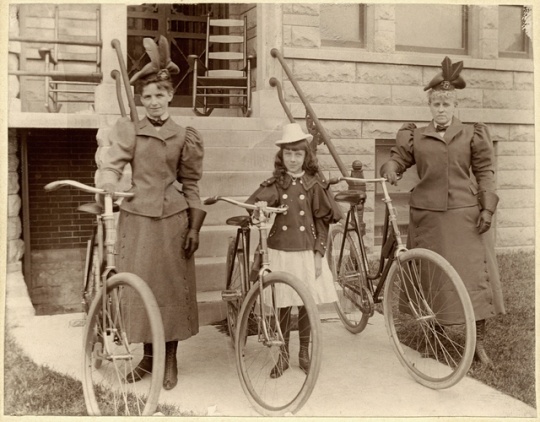
Two women and girl with bicycles
Public domain
Holding Location
Articles
More Information
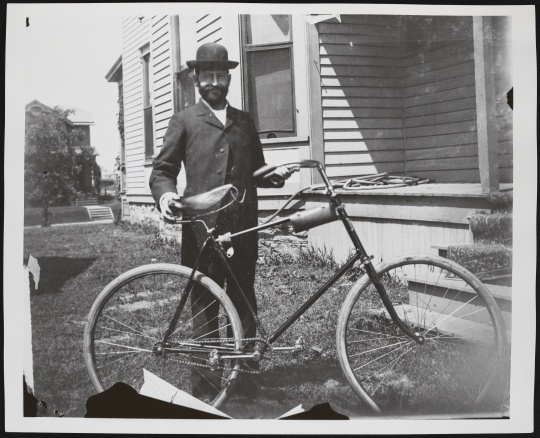
Man with bicycle
Public domain
Holding Location
Articles
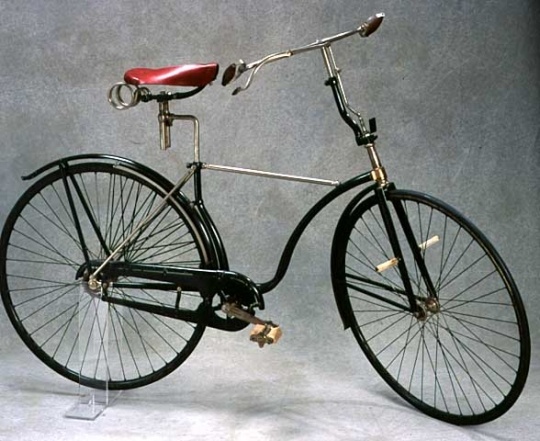
Warwick "Perfection" safety bicycle
All rights reserved
Holding Location
Articles
More Information
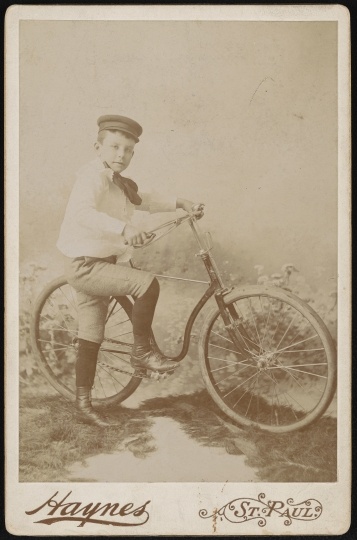
Boy and his bicycle
Public domain
Holding Location
Articles
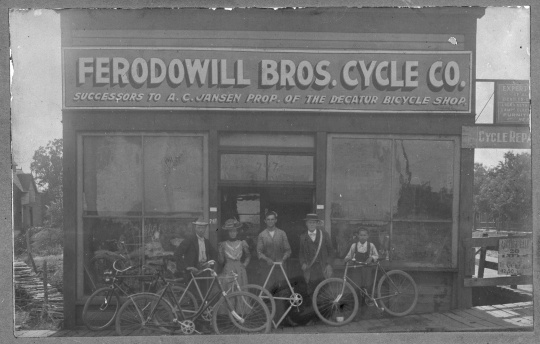
Ferodowill Brothers bicycle repair shop
Public domain
Holding Location
Articles
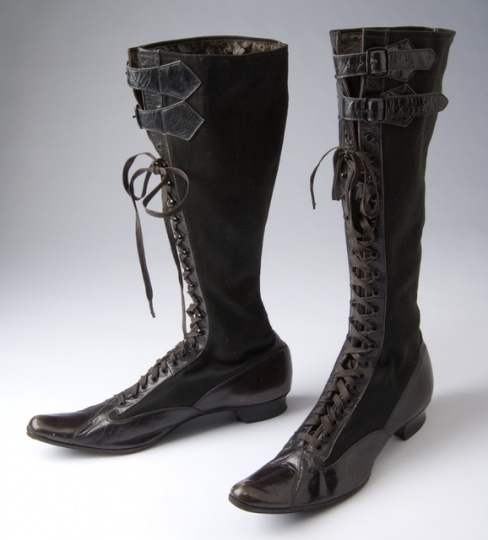
Woman's bicycle boots
All rights reserved
Holding Location
Articles
More Information
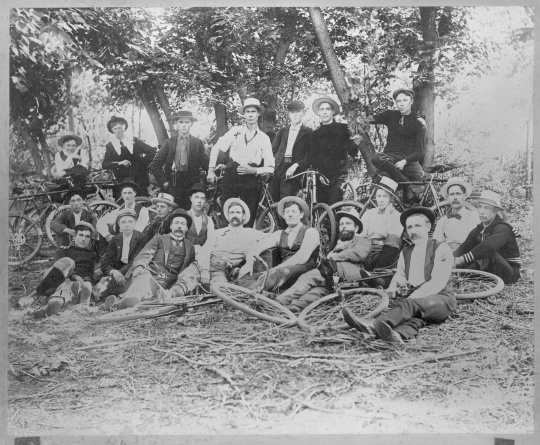
Dawson Bicycle Group
Public domain
Holding Location
Articles
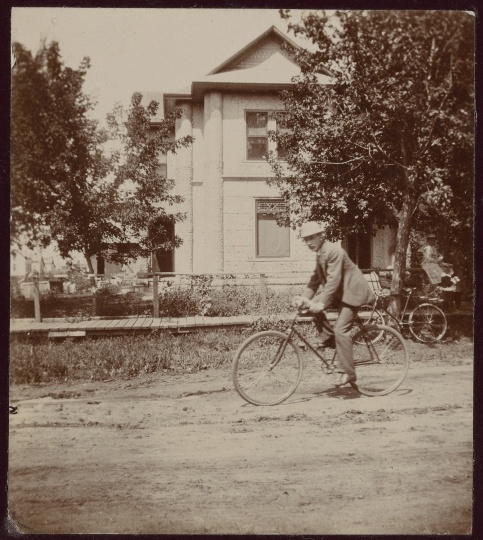
Theodore Palmer on a bicycle
Public domain
Holding Location
Articles
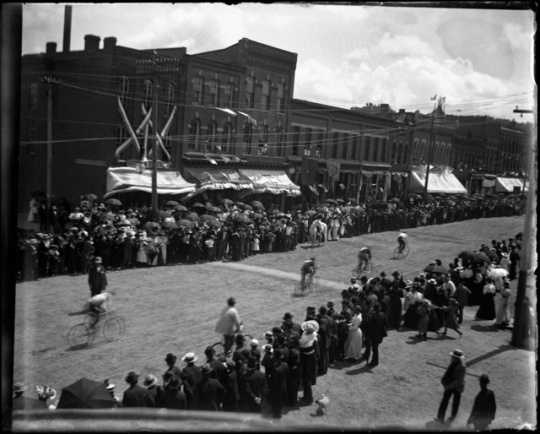
Bicycle race, Red Wing
Public domain
Holding Location
Articles
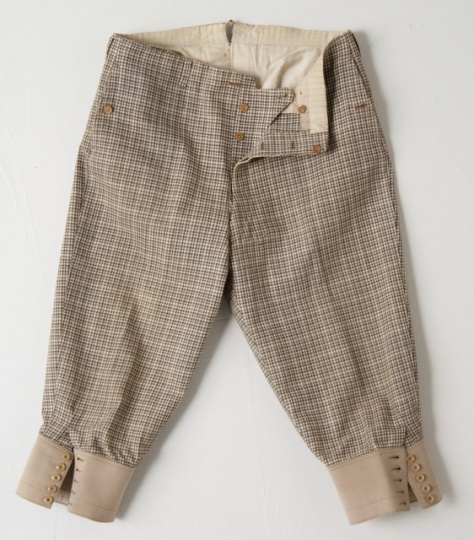
Bicycle knickers
All rights reserved
Holding Location
Articles
More Information
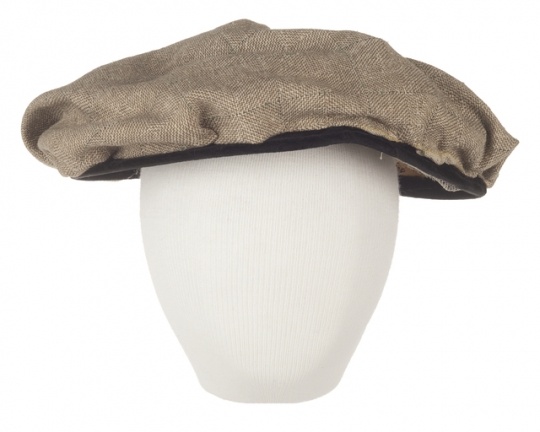
Bicycle hat
All rights reserved
Holding Location
Articles
More Information
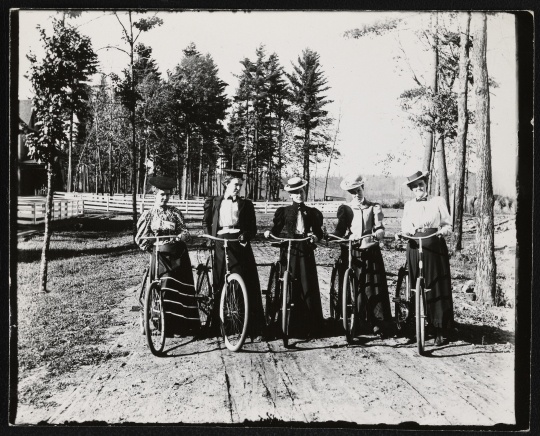
Women with their bicycles
Public domain
Holding Location
Articles
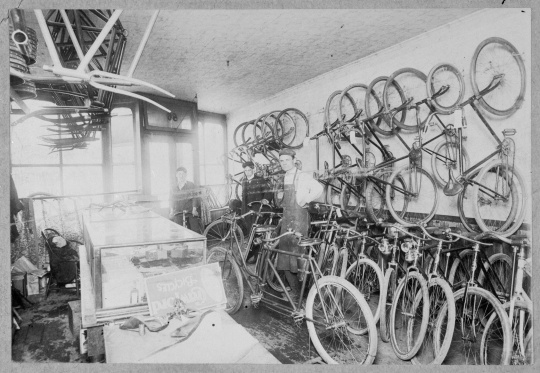
Ferodowill bicycle repair shop
Public domain
Holding Location
Articles
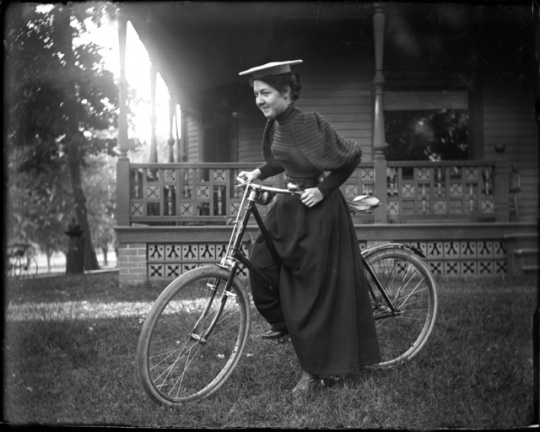
Woman and bicycle
Public domain
Holding Location
Articles
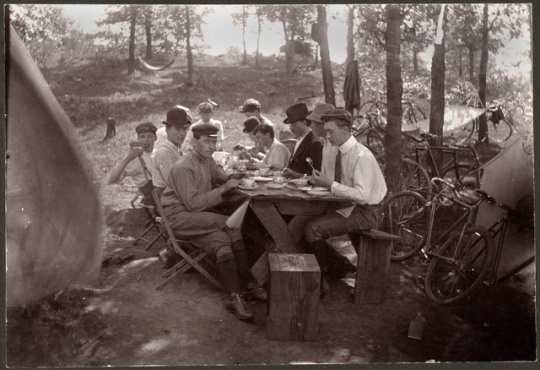
Charlie Skon's Bike Club
Public domain
Holding Location
Articles
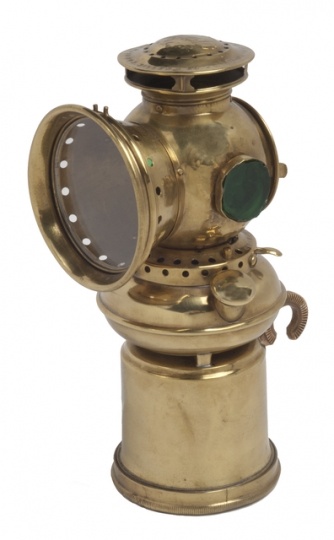
'Majestic' carbide bicycle lamp
All rights reserved
Holding Location
Articles
More Information
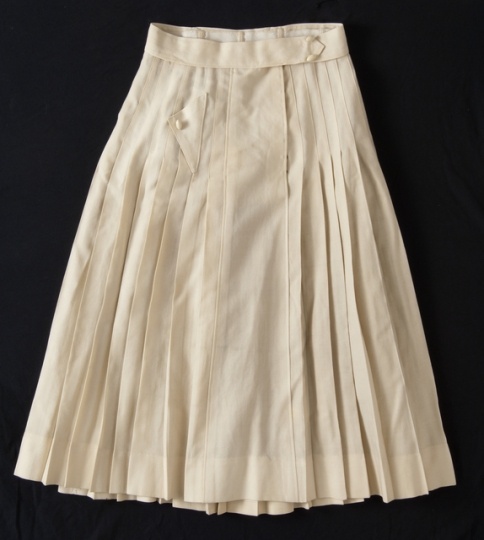
Woman's bicycle skirt
All rights reserved
Holding Location
Articles
More Information
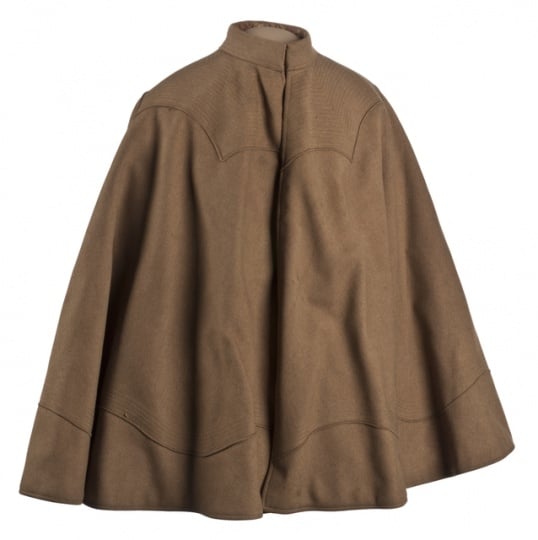
Woman's bicycle cape
All rights reserved
Holding Location
Articles
More Information
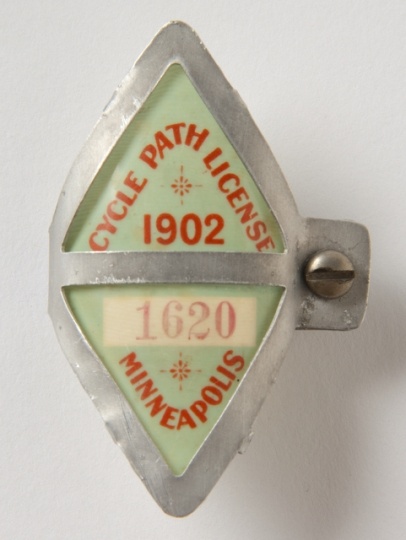
Bicycle license plate
All rights reserved
Holding Location
Articles
More Information
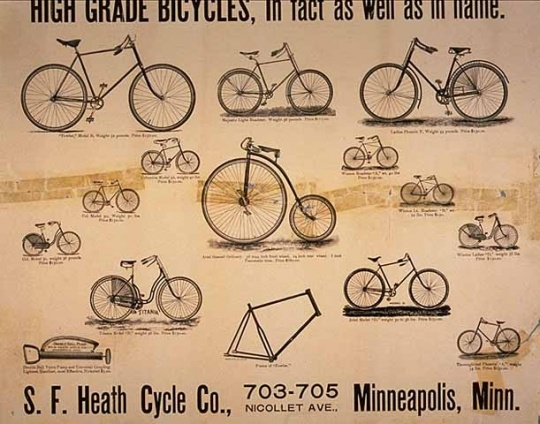
High Grade Bicycles
Holding Location
Articles
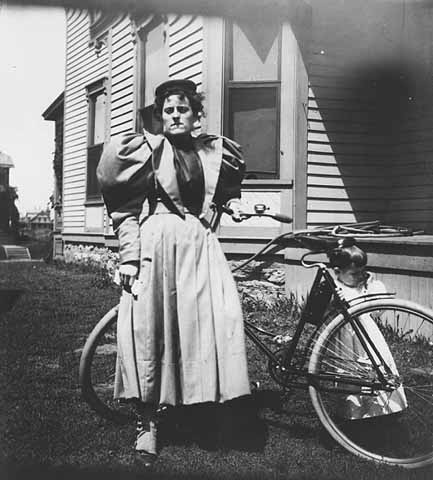
Woman with a bicycle
Holding Location
Articles
Related Articles
Turning Point
The introduction of affordable safety bicycles with pneumatic tires in Minnesota by 1892 makes the bicycle craze in this state possible.
Chronology
1892
1898
1900
Bibliography
Smith, Robert A. A Social History of the Bicycle, its Early Life and Times in America. New York: American Heritage Press, 1972.
Spreng, Ron. "The 1890s Bicycling Craze in the Red River Valley." Minnesota History 54, no. 6 (Summer 1995): 268–282.
http://collections.mnhs.org/MNHistoryMagazine/articles/54/v54i06p268-282.pdf
Wilson, George,"Bicycles Started Good Roads Movement in State." Mankato Free Press, April 27, 1942.
——— . "Farmers Regarded Early Cyclists as Road Hogs." Mankato Free Press, April 24, 1942.
——— . "First 'Cushion-Tired' Bike Cost About $125." Mankato Free Press, April 23, 1942.
——— . "Wood Wheels on First Bike." Mankato Free Press, April 22, 1942.
Related Resources
Primary
G 4144 .T89E63 1899 .S75
Map Collection, Minnesota Historical Society, St. Paul https://collections.mnhs.org/search/collections/record/11baf8b5-45c9-48fd-9d12-e81dad911ae3
Description: St. Paul Cycle Path Association. Cycling Routes Around the Twin Cities. [St. Paul]: St. Paul Cycle Path Association, 1899.
Ashton, R.W, "Showrooms Full of Bicycles-Advertisement." Pipestone County Star, May 17, 1895.
"The City-A Party of Bicyclists." Crookston Times, August 27, 1896.
Curtice, D.L. Curtice's Standard Guide Map of the City of St. Paul: Prepared Specially for R.L. Polk and Cos. City Directory, 1897. [St. Paul]: David L. Curtice, 1897. Editor's Note: Includes bicycle paths.
———. Curtice's Standard Guide Map of the City of St. Paul: Prepared Specially for R.L. Polk and Cos. City Directory, 1898. [St. Paul]: David L. Curtice, 1898. (Editor's Note: Includes bicycle paths.)
———. Curtice's Standard Guide Map of the City of St. Paul: Prepared Specially for R.L. Polk and Cos. City Directory, 1899. [St. Paul]: David L. Curtice, 1899. (Editor's Note: Includes bicycle paths.)
Houlgate, Isaac. Guide to Minneapolis Bicycle Paths: Index map for 1902, with history, directions, dealers, repairers, statistics, etc.: drawn, written and compiled from latest sources. Minneapolis: Houlgate, 1902.
Kennedy Brothers, "The Best Line of Safeties-Advertisement." Minneapolis Journal, June 4, 1892.
"Local and Otherwise-The Bicycle Tournament." East Grand Forks Courier, April 3, 1896.
McDonald Brothers. Advance Bicycle Catalogue. Minneapolis: Kimball and Storer Co., 1898.
The Pathfinder Cyclists' Map and Guide Book: Containing a Road Map of that Part of Minnesota Within a Radius of 75 Miles of the Twin Cities. Minneapolis: Blodgett and Moore, 1897.
Principal Cycle Runs from Minneapolis: Taken from L.A.W. Record and the Notes of A.A. Hansen. [Minneapolis: The Minneapolis Times, 1896.]
St. Paul Hardware Company. Bicycle Catalogue, 1892. St. Paul: J.W. Cunningham and Co., Printers, [1891?].
"Will Race Again Monday Evening." Fergus Falls Daily Journal, July 25, 1896.
"Winter Won," Fergus Falls Daily Journal, July 5, 1895.
Secondary
Epperson, Bruce D. Peddling Bicycles to America: The Rise of an Industry. Jefferson, NC: McFarland and Company, Inc., Publishers, 2010.
Fifty Years of Schwinn-Built Bicycles: The Story of the Bicycle and its Contributions to Our Way of Life, 1895–1945. Chicago: Arnold, Schwinn and Company, 1945.
Palmer, Arthur Judson. Riding High: The Story of the Bicycle. New York: E.P. Dutton and Co., Inc., 1956.






















